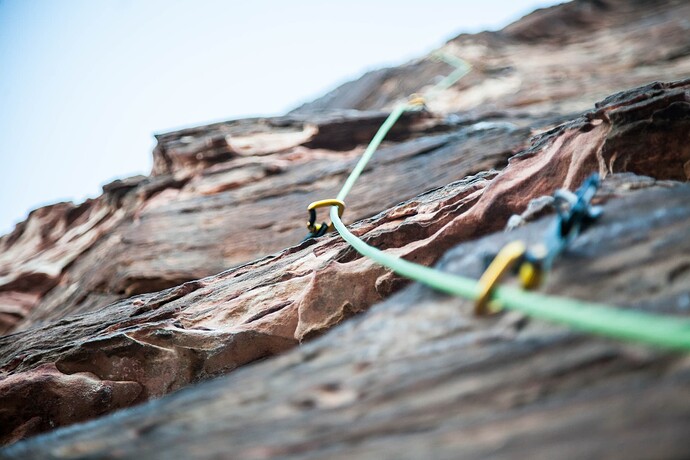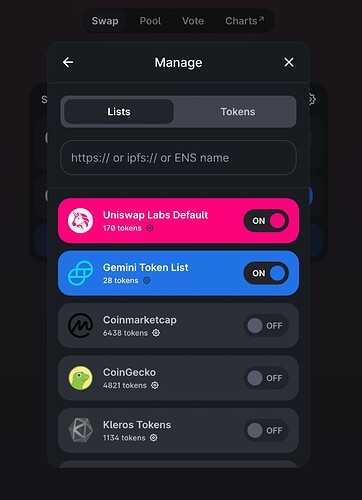Introduction - progressive decentralization
In August 2021, we took the plunge and announced that SuperRare would take the path of progressive decentralization, committing to a future as a user-controlled platform. This meant that we had to innovate and devise a way for each core component of the platform to transition to decentralized ownership and control.
The first and most fundamental piece was also the simplest: marketplace revenue. Upon launch of the DAO, 100% of marketplace fees were routed to the community treasury, no longer flowing directly to SuperRare Labs.
The second piece was the question of artist promotion. When SuperRare was small, we did what we could to retweet a drop or hype up an auction, but that obviously wouldn’t scale. So we designed and launched Spaces - independent gallery storefronts on SuperRare run by professional curators incentivized to sell works on behalf of artists.
However some pieces are much more complex, with implications for user experience, brand, community, and competitive positioning. The thorniest of these is the question of gatekeeping: what artists get to be on SuperRare? Launching Spaces was an important first step toward community curation, but the question of how to vet and verify artists at the platform level remained undefined.
The problem can be broken down into more specific questions: How should artists get onto SuperRare? What role should SuperRare Labs play? What role should Spaces play? What role should $RARE holders play? As a community-controlled platform, how do we balance curation, exclusivity, and openness?
In short – we’ve had this mega-question in front of us for the past year: how does SuperRare transition to a scalable, transparently-governed, community-controlled system of gatekeeping, while maintaining our reputation for trust, authenticity, and quality?
In this document we cover this challenge in detail, and outline a proposed solution: that SuperRare adopt a multi-list architecture analogous to Uniswap’s Token Lists.
Gatekeeping is dead, long live gatekeeping
But first, why do we need gatekeeping at all?
When SuperRare launched in 2018, we founders imagined that we’d only control publishing access for a few months at most. We thought it would be a fully open system soon enough, with algorithms controlling the content like on other content platforms. Being exclusive and tightly controlled was never part of the plan.
But in 2019 and 2020 several competing platforms launched with a fully open model where anyone could mint anything as an NFT. The incentive for bad actors to pose as legitimate creators proved to be an intense force, and these platforms underwent a painful erosion of trust at best, and had to shut down altogether at worst, thanks to rampant scams and fraud.
All the while, we stuck to our “least bad solution” of hand-picking a curated community of artists who could publish on SuperRare, and, thanks to our awesome in-house curation team, garnered an increasing reputation for quality curation and authenticity.
In short, a thoughtful, measured approach to growth has allowed SuperRare to build a community that cares about authenticity and originality, and solidified our position as the place for high quality cryptoart. However, the legacy, centralized model of artists applying to SuperRare Labs to get minting access on the platform is flawed and in need of a complete overhaul.
So, the task at hand is to have our cake (maintain a reputation for trust, quality & authenticity) and eat it too (adopt a scalable, decentralized gatekeeping model).
Adopting the multi-list model
To solve this, we propose adopting what we call the multi-list model, which is a durable, scalable platform design that will allow SuperRare to continue to grow and thrive at web scale.
Single-list model vs. multi-list model
We’re all intuitively familiar with the single-list model – it’s how Netflix, Coinbase, and the App Store all work. A platform maintains a centrally-controlled list of things, and users are able to view and interact with exactly those things, and nothing else.
In contrast, the multi-list model is how Uniswap works. The platform developers maintain a list of tokens recommended to users as a default state, but the user is free to switch off the default list, and switch on one or more different branded, curated lists of tokens. This is possible because, unlike data in web2 which is constrained to the platform (e.g. YouTube videos aren’t available on Vimeo), web3 is built on a shared data layer, open and accessible to any application.
The problem with the single-list model for SuperRare
It may be tempting to pursue the single-list model because it’s familiar and seems straightforward. But after a full year of thinking deeply about it, we are not convinced of a model by which a single, high quality list that can be maintained by a decentralized community. In 2017-18 there was academic momentum in the industry around Token Curated Registries, or TCRs, but nobody has really built a successful product around the concept in over four years, and our own R&D into this challenge hasn’t yielded anything better. And given that art is highly subjective, one big master list of “good” artists doesn’t seem scalable, increasing our conviction that the single-list model isn’t right for SuperRare.
Benefits of the multi-list model
The best part about the multi-list model is that it’s already an emergent pattern on SuperRare. There is already a “SuperRare Labs default list”, just like on Uniswap – the legacy SRL allowlist – we just don’t call it as such. There are also multiple other branded, community-owned, curated lists – Spaces! In other words, it’s already how SuperRare works, we just haven’t fully embraced it yet.
It’s also a simple model that doesn’t require any new invention at the cryptoeconomic or protocol level: each list is simply controlled by one or more sovereign individuals, and the power is in the hands of the collector to toggle on or off lists as they see fit. It’s not controversial that each list is centralized, because there are multiple lists.
High-level steps needed to adopt the multi-list model*
- Allow logged-in users to control which curators’ lists they want to see when browsing SuperRare. This means that if they want to turn off the default SuperRare Labs list of artists while browsing the marketplace, leaving only a Space curator’s list, they can easily do so.
- Announce that the SUPR minting contract will be capped at xx,xxx tokens (maybe 50k?) The reason for doing this is that a platform-specific minting contract is a holdover from the early days of cryptoart, when curation and mining were tightly coupled. This holdover makes it harder to evolve into an aggregated, multi-curator model and it’s best to sunset.
- Make artists listed by Space curators “full citizens”, meaning that no matter if you were added to the SRL list, or a Space list, you’re a “listed artist” or “SuperRare artist” – all with full rights to mint via the SR UI, or import Manifold, Transient, or other NFTs. (This is in contrast to how it works now, when artists are kind of “in limbo” and are restricted to only what the Space operator will allow).
- Redesign the artist ingress flow, so that artists are no longer “applying to get onto SuperRare” via a form that goes to SuperRare Labs, but rather fleshing out a public-facing profile and trying to get on the radar of a decentralized network of curators.
- Launch the SuperRare Codex, the place where curators can peruse un-listed artists and list them.
- [Future potential] de-couple lists from Spaces, so that there can be curators who are good at picking/onboarding artists, but who don’t want to run a gallery
*There are more steps needed, but this is a high-level summary. Protocol and curation-related changes will be formally proposed via a SIP following community discussion around this post.
Changes to user experience and power structures on SuperRare
Adopting the multi-list model will mean some fundamental changes to the user experience and power structures on SuperRare. Here’s how that will play out for various actors in the ecosystem:
SuperRare Labs:
- SRL continues its legacy of crafting a list of premier digital artists, adding and removing artists as its curators see fit.
- But rather than having the final say in who “gets onto SuperRare” - SRL becomes just one of many official gatekeepers, all of whom have equal power to fully bring artists into the ecosystem.
Artists:
- Rather than applying to SuperRare Labs to “get onto SuperRare”, artists will have a new flow where they can complete their artist profile, and submit it to get on the radar of the whole network of curators (i.e. SRL curators and Spaces)
- The distinction becomes “listed artist” vs. “unlisted artist”. Meaning, if you are an artist on one or more curators’ lists, you will show up on SuperRare for people browsing with that curated list toggled on. I.e. you are a “listed artist” or “SuperRare artist”.
- Once listed, the experience of using SuperRare is the same for all artists, whether listed by SRL or another curator. I.e. they can mint in the SuperRare UI, import their own contracts, etc. – no artist will have any more or fewer fundamental capabilities at the platform level.
- Artist profiles will display which curators’ lists they’re on (similar to how profiles currently show affiliated Spaces)
Collectors:
- Signed-in users will be able to toggle or follow/unfollow the curators they want to see while using the platform
- Only artists from one of the curated lists that you follow will appear when browsing the marketplace, unless you specifically go to that artist’s profile
- Anyone can browse a new artist and collector registry called the Codex to see both listed and un-listed artists
Curators:
- Curators from SRL and Spaces can browse the Codex to see unlisted artists who have filled out and submitted their artist profile
- Once a curator finds a new artist they’d like to bring on to SuperRare, they list them. If this is the first time an artist is listed, SRL onboards them to the platform
- Curators can also of course list artists already on other lists, so popular artists will appear on multiple lists
Conclusion
It is vital that we continue to set SuperRare up for future success as a sustainable, web-scale platform that can remain competitive for years to come. With this aim in mind, pivoting to being an aggregated platform with decentralized curatorial control is the great project of 2022. Determining the decentralized curation model for SuperRare was the last big piece of the puzzle. The multi-list platform model will make for a much clearer, more equitable user experience for artists, collectors, and curators, and we believe it will enable a truly decentralized art market to grow and thrive.

